3 Ways To Make Homemade Butter
This post may contain affiliate links.
Homemade butter is one of the simplest pleasures in life. This post will show you how to make butter using 3 easy methods - using whatever you have in your kitchen right now!
There are instructions for how to make butter using a simple mason jar, a stand mixer or Thermomix.
There's sure to be a butter making method that suits you and the equipment you have on hand!
Homemade butter is the perfect accompaniment to homemade sourdough bread. It's also amazing for making sourdough garlic bread and can be made into delicious whipped herb butter, whipped Brie butter ... or even a butter candle! Ooooh and you have to try it smothered on these homemade sourdough biscuits or this easy sourdough discard bread!
You might also like to try your hand at making cultured butter or even homemade ricotta cheese.
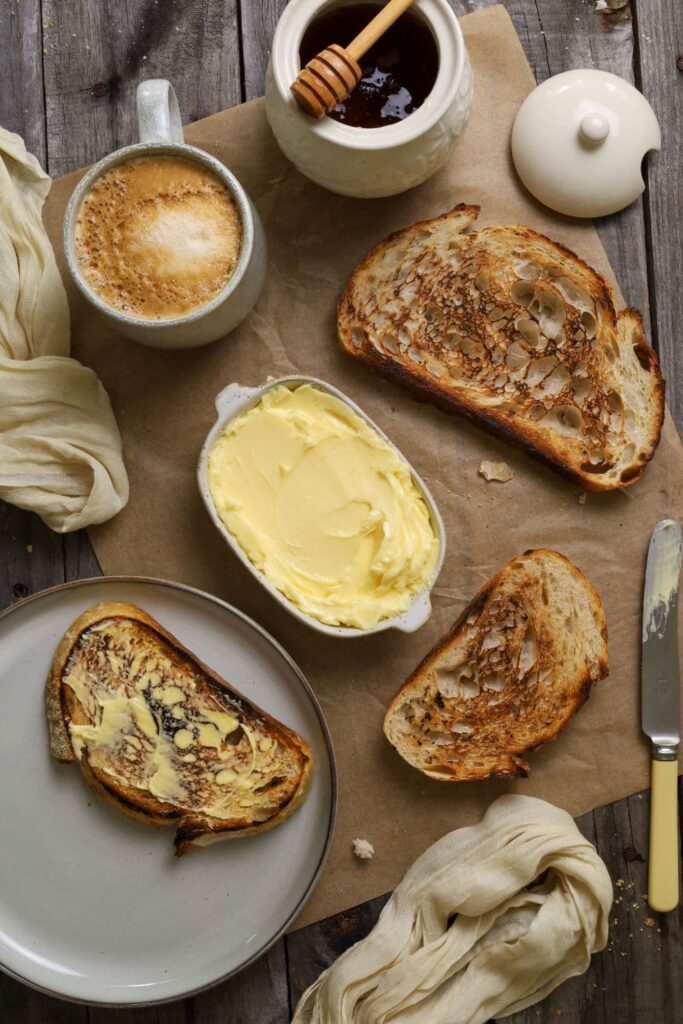
Why Make Butter When You Can Buy It?
Depending on where in the world you live, buying good quality butter can be expensive. Being able to make your own is a great skill to have, particularly when there are food shortages or times when food may be harder to buy.
Making your own butter means you know what goes into it - there's no preservatives, additives, colors or numbers. No flavor enhancers. Just pure butter (and a little salt if you choose).
Another great reason to make your own butter is you can take advantage of buying cream when it's on sale or clearance. You can easily make butter from cream that is very close to its expiry date, so buying cream that is marked down is a great way to lower the cost of your butter. And looking after your budget is always a good idea, right?
And I always think, if you're making sourdough, it just makes sense to have good quality homemade butter to spread on top!
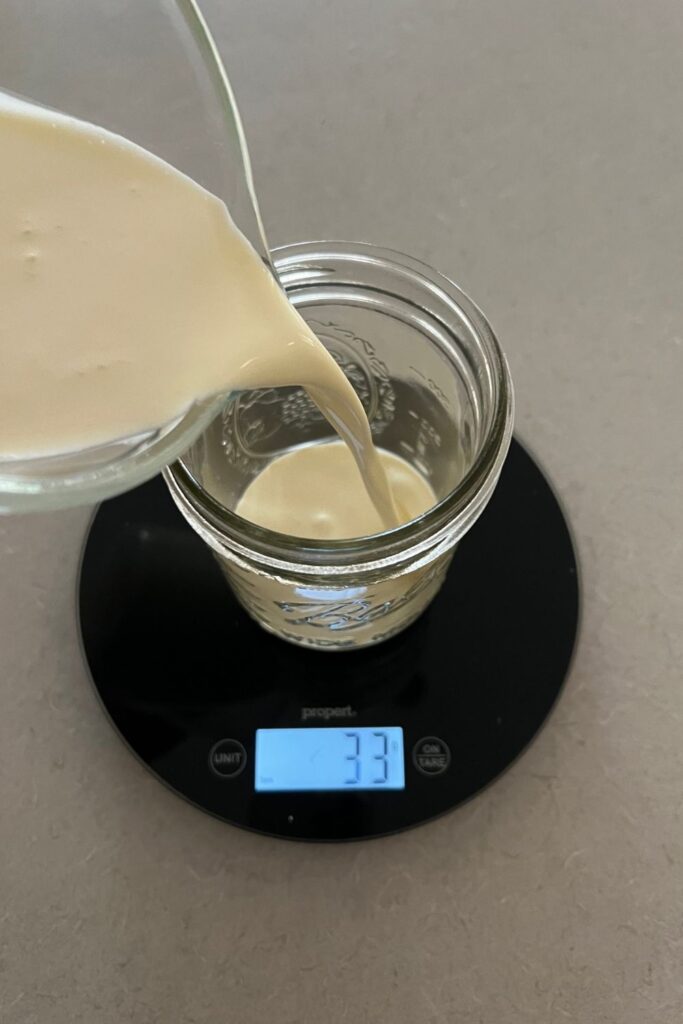
What Type of Cream Is Best To Make Butter?
Heavy cream is the best type of cream to make butter with. This could be called whipping cream, heavy cream or heavy whipping cream.
It really doesn't matter what brand you use. As long as it's heavy cream. In general, heavy cream will contain 40% butter fat and 60% milk solids and water.
You cannot make this homemade butter recipe using milk. It must be cream.
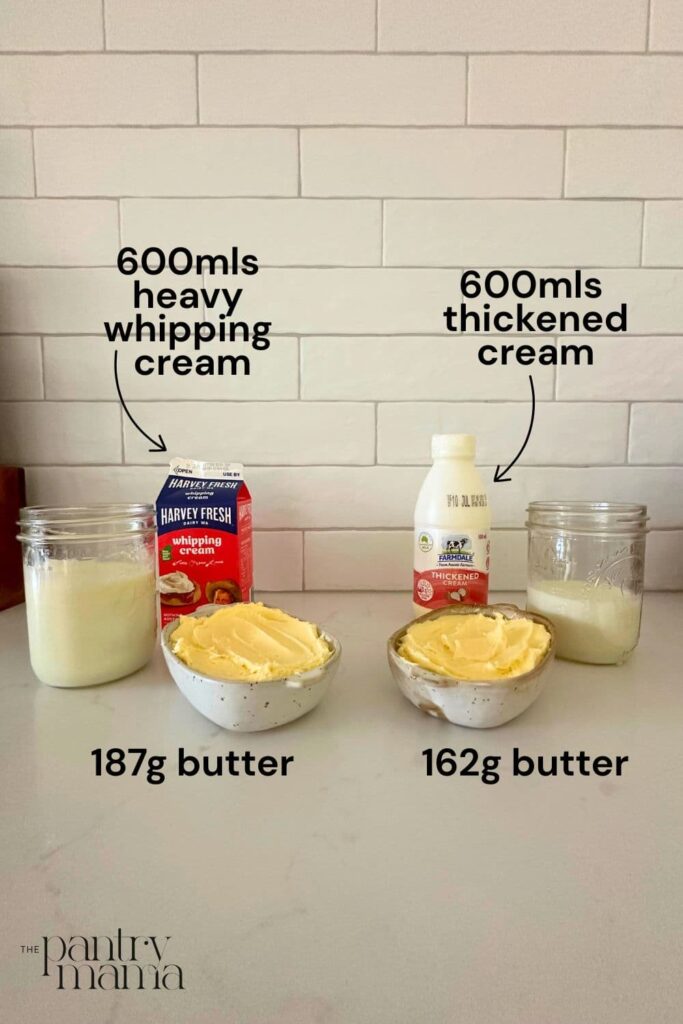
3 Ways to Make Homemade Butter
I have chosen to provide instructions for making butter using 3 different methods because I want everyone to be able to make their own butter.
Whether you have a stand mixer, a Thermomix or you just want to make it in a mason jar - there's no reason you can't make your own butter! You could even use a hand mixer if you want to.
Most of the time, I make our butter using my Thermomix because it allows me to make a large quantity (I have 3 growing boys so we go through a tonne).
But my boys also love making butter in a mason jar - and all that shaking is a great way to keep them occupied.
Equipment For Making Butter
Whichever method you choose, you'll need the following equipment, in addition to your chosen apparatus.
- Ultra fine cloth (thin cotton pillowcase or dish towel is fine too)
- Clean mason jar to strain buttermilk into (I use 16oz Ball Jars)
- Clean jar/container to store butter in
The following items are not essential, but they can be a very useful addition to your kitchen if you want to make butter regularly.
- Butter crock to store your homemade butter in (French Butter Bell)
- Butter mold to shape your butter into a standard "stick"
- Magic butter knife to allow you to spread cold butter with ease
Make Butter In A Mason Jar
This is the simplest and cheapest way to make butter at home. It's also relatively fast, so long as you don't try to make too big a quantity at once.
I have used a 16 oz wide mouth Ball Jar with a plastic lid. Basically the same jar I use to make my sourdough starter in. I find the wide mouth is simple for getting the butter out. I purchase the plastic lids separately as I find them better than the metal lids that come with the Ball jars.
I find this is the most comfortable to shake. You can use a larger jar if you wish to make more, but it will take a bit longer than the time frame I've outlined here.
If you're not up for shaking the mason jar, grab one of these butter churner attachments to make the job easier.
Here's How To Do It:
- For this method I recommend only using up to 250 mls of cream in the jar at a time (unless you're using a huge jar!). I use 16oz Ball Jars.
- Place up to 250 mls of cold heavy cream into a mason jar ( and screw the lid on tightly.
- Shake the jar vigorously for around 5 minutes or until the cream separates into butter and buttermilk. The time it takes for this to happen can depend on the age of the cream (fresher cream takes longer to separate). Just before the cream separates it will feel like it's not moving at all in the jar, but just keep going!
- Once the cream has separated into butter and buttermilk you need to strain it. Place a fine sieve or muslin cloth over a clean wide mouth mason jar and tip the butter into the cloth, allowing the buttermilk to drain through. Use the cloth the squeeze out as much of the buttermilk from the butter as you can.
- Set the buttermilk aside.
- Place the butter back into the jar you use to shake it in and cover it with ice cold water. Place the lid back on and shake the butter for around 30 seconds to wash it.
- Strain the butter back through the cloth, again squeezing out as much water as you can. This water can be thrown away.
- Your butter is ready to use! You can leave it unsalted or if you want to add a bit more flavor, add a pinch of salt to the butter and mash it through with a fork or spoon.
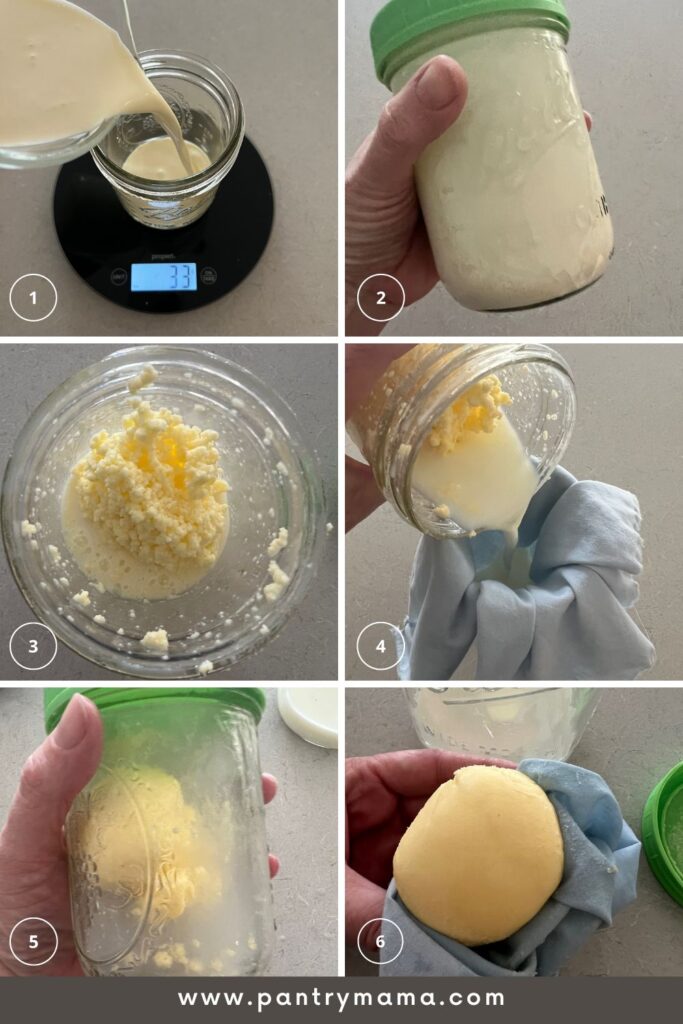
Making Butter In A Stand Mixer
Using a stand mixer can make the butter making process much faster and you can make a bigger batch than you can in a mason jar.
When making butter in a stand mixer, you need to use the wire whisk attachment for the best results and use at least 250 mls of cream. For best results, use up to 600 mls of cream. This will give you a good yield of butter.
I also highly recommend using the pouring guard or splatter guard if you have one because butter making can get a bit messy!
Here's How To Do It:
- For this method, you need to use your wire whisk attachment. I highly recommend using the splatter guard too as when the cream separates it can splatter a lot.
- Once your wire whisk attachment is fitted, add the cream to the bowl. Then add fit the bowl guard.
- Turn the stand mixer on, gradually increasing the speed from the lowest the highest. The cream should start to get thick as it starts to whip.
- Keep the mixer going at its highest speed until the cream separates into butter and buttermilk. It can take anywhere from 2 to 5 minutes. Just be patient - it will happen!
- Once the cream has separated and the butter has collected inside the wire whisk, turn the stand mixer off. Lay a muslin cloth over a clean bowl or jar and knock the butter out of the wire whisk and into the cloth. Use the cloth to squeeze out as much of the buttermilk as you can. Add this buttermilk to the buttermilk in the stand mixer bowl and set aside (you can use this for lots of different things).
- Add the butter back to the stand mixer bowl and pour over one litre of icy cold water. Turn the stand mixer on and gradually increase from lowest speed to highest speed for around 30 seconds to one minute. Once the butter has collected in the wire whisk, turn the mixer off.
- Lay the muslin cloth over a bowl again and knock the butter back into the cloth. Use a spoon or scoop to grab any stray bits of butter from the water before disposing of the water.
- Use the muslin cloth to squeeze out as much of the water as you can from the butter. The more water you squeeze out the better.
- Once you've strained the butter as much as you can, it's ready to use!
- If you want to add salt to your butter, add the butter back to a clean stand mixer bowl and add up to 5g of salt. Turn the mixer on, gradually moving from lowest to highest speed until it's light and creamy and the salt has been whipped in.
- Use a spatula to remove the butter from the whisk and bowl and transfer it to a clean container or jar.
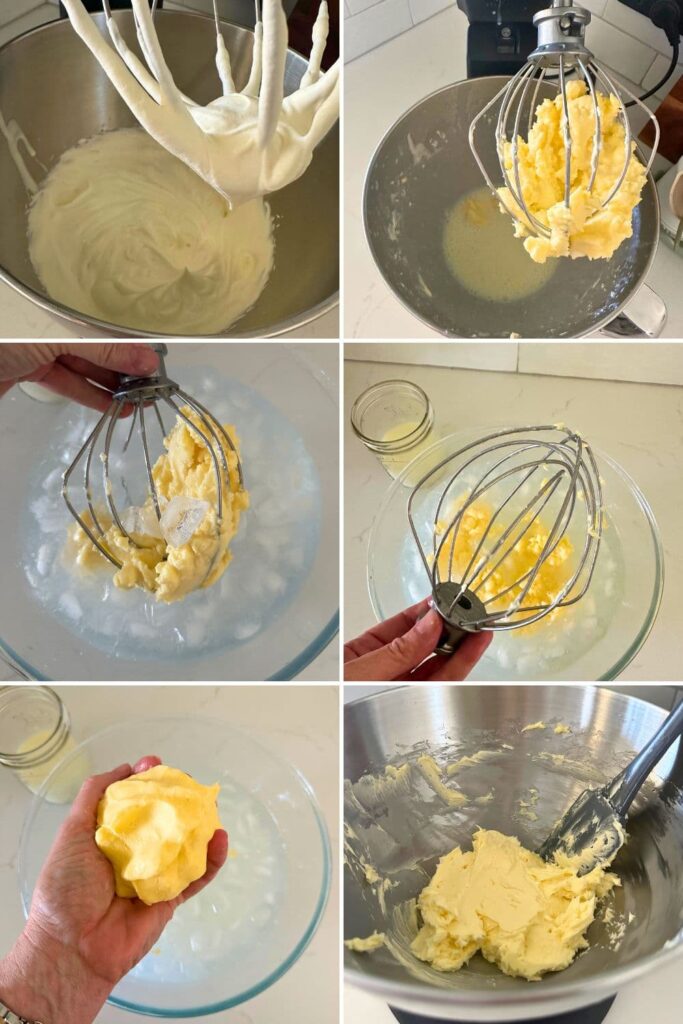
Making Butter in a Thermomix
If you have a Thermomix in your kitchen then making butter could not be easier or faster! You can use up to 600 mls of cream at a time.
It is recommended to use the butterfly insert, however don't stress if you forget it. I've successfully made butter without it many times!
I use a TM5 to make my butter, however this recipe will work in a TM31 or a TM6 with no issues.
If you want to use your Thermomix to make amazing sourdough bread to slather your butter on, check out my Thermomix Sourdough Recipe here.
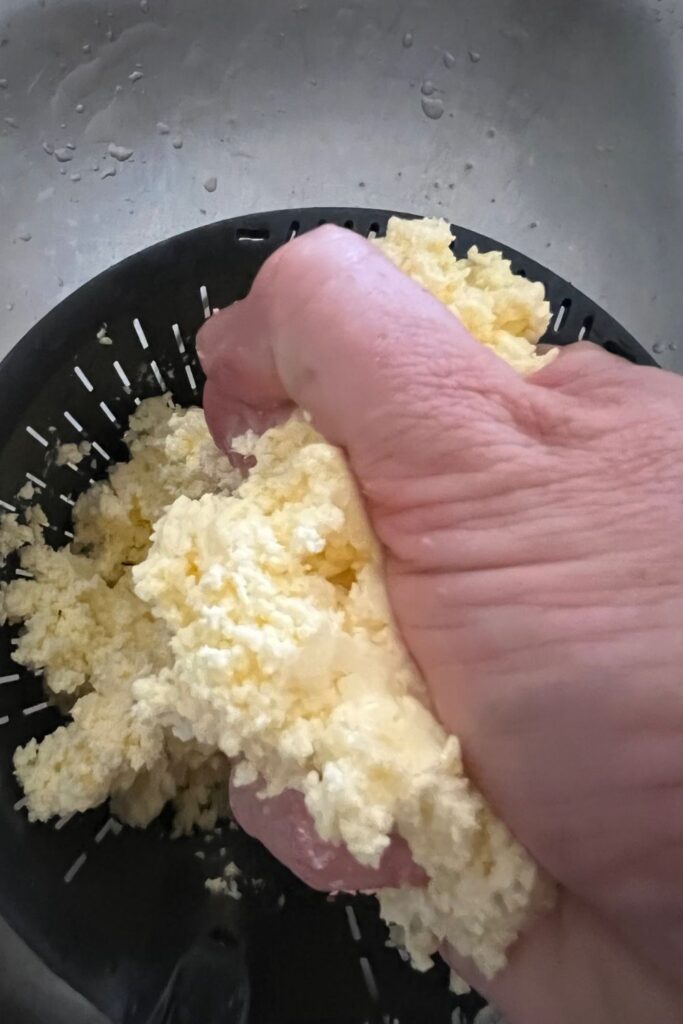
Here's How To Do It:
- Insert the butterfly and pour 600 mls of cream into the bowl (it's important not to use more than 600 mls of cream at a time). Secure the lid and measuring cup. Whip the cream at speed 4 for around 1 to 4 minutes.
- You'll know the cream has separated into butter and buttermilk when you hear the blades change in sound.
- Once the cream has separated, remove the butterfly insert. Place the basket into a clean bowl and tip the buttermilk and butter into the basket, catching the buttermilk in the bowl below. Use your spatula to press as much of the buttermilk out as you can (you can use a piece of fine cloth if you prefer).
- Set the buttermilk aside and return the strained butter to the Thermomix bowl, adding 1000 mls of iced water. Turn on to speed 4 for around 30 seconds to wash the butter.
- Tip the butter into an ultra fine cloth and squeeze out as much water as you can (you can just use your hands to squeeze the water out if you want to - see the image above).
- If you want salted butter, return the butter to a clean Thermomix bowl with 5g of salt. Whip for 30 seconds on speed 4.
- Your butter is now ready to use!
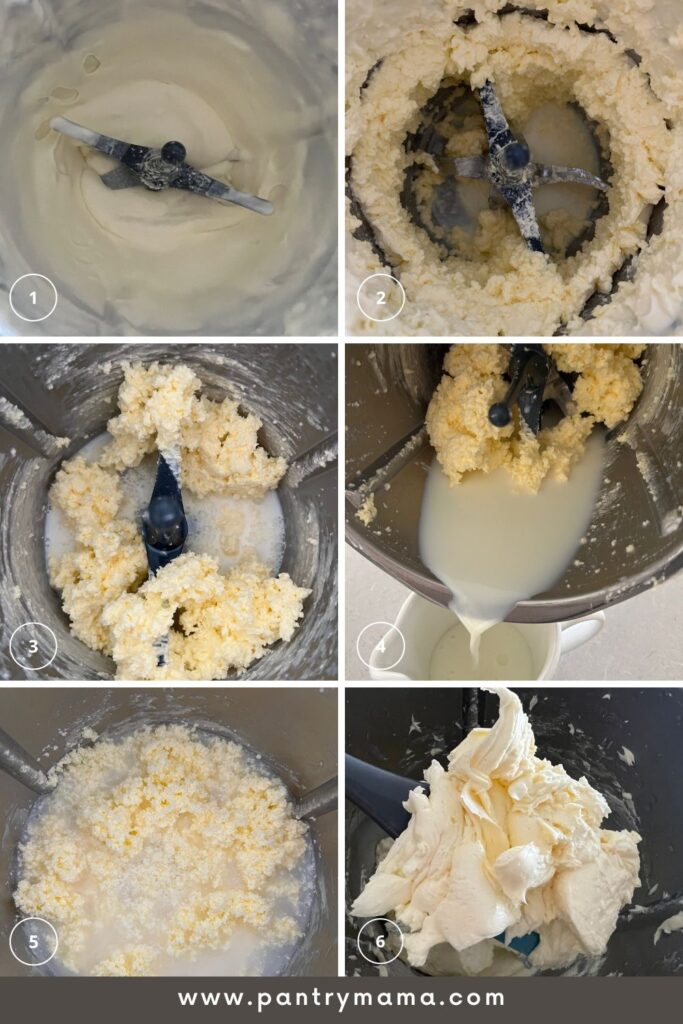
Best Tips
As you can see, whichever method you choose to make butter at home, it's a fairly simple process. But I've put together some tips for you to make sure you have success every time you make it yourself.
- Always use heavy whipping cream - you need to have at least 40% butter fat to have success with this recipe.
- You can use cold cream or cream at room temperature. If you are using the mason jar method, cream that is at room temp can make it easier for it to separate. If using a stand mixer or Thermomix, the temperature of the cream really doesn't matter too much.
- Always use iced water when washing the butter. If the water is not icy cold, the butter will melt.
- Don't throw away that buttermilk! Take the time to store it in a clean jar. It will last for a few weeks in the fridge.
- If you want to create super spreadable butter, even straight from the fridge, add a dash of milk or olive oil to the butter when you add the salt. This works best in a stand mixer or Thermomix. Whip it altogether and you will end up with a delicious pale, creamy butter that is super spreadable, even straight from the fridge.
- You can use a butter mold to create sticks of butter for convenience if you like, but just placing the butter into a dish is fine too.
Why Do You Need To Wash Butter?
Butter needs to be washed with icy cold water after you've squeezed out all the buttermilk. Washing butter removes as much of the buttermilk as possible. This is important as if you don't remove it, the butter can go rancid more easily.
It's important to use icy cold water for this step because it ensures that the butter stays cold. If you use room temperature water, the butter will melt and will not clump and you'll have a big greasy mess.
I generally use a fine cloth to squeeze out as much water as possible. If you are using the butter straight away or you are going to eat it within a few days, it's not as important to squeeze the butter so much.
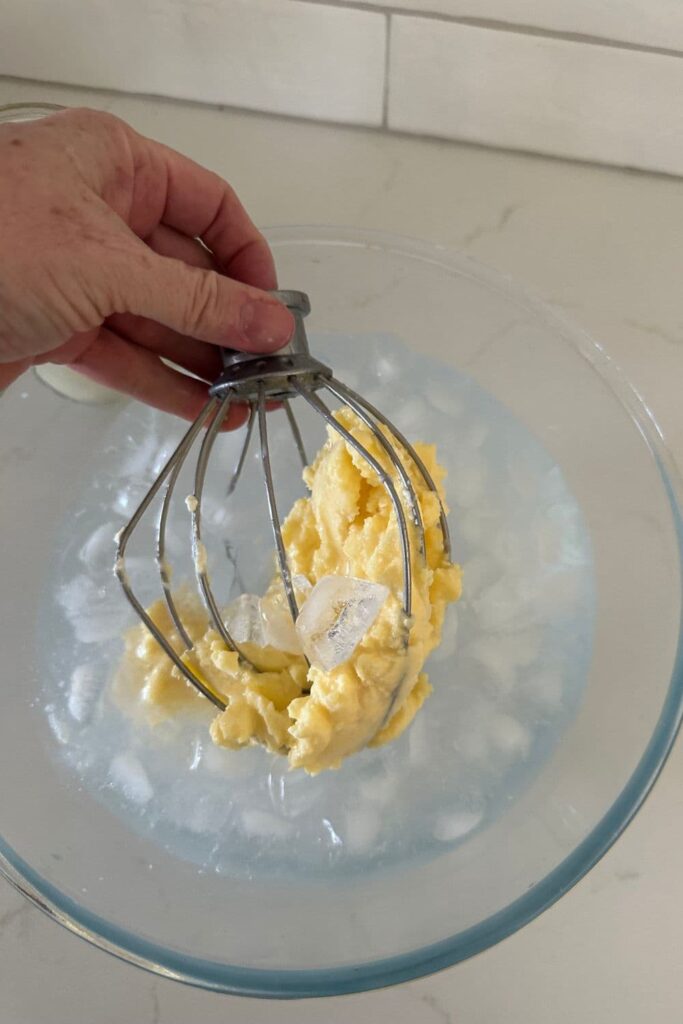
Storage
If you are going to be using your butter within a few days, you don't need to worry so much about squeezing out all the water. A little bit of residual water/buttermilk will not cause spoilage in a few days, particularly if you've added salt.
I recommend salting your butter, not only for flavor, but also to preserve it. If you have been following my blog for a while, you'll know I LOVE salt and only ever cook with salted butter!
I use whatever salt I have on hand for salting my butter - use what you have and love.
Store your homemade butter in a clean jar or container, or my personal favorite, a French butter bell!
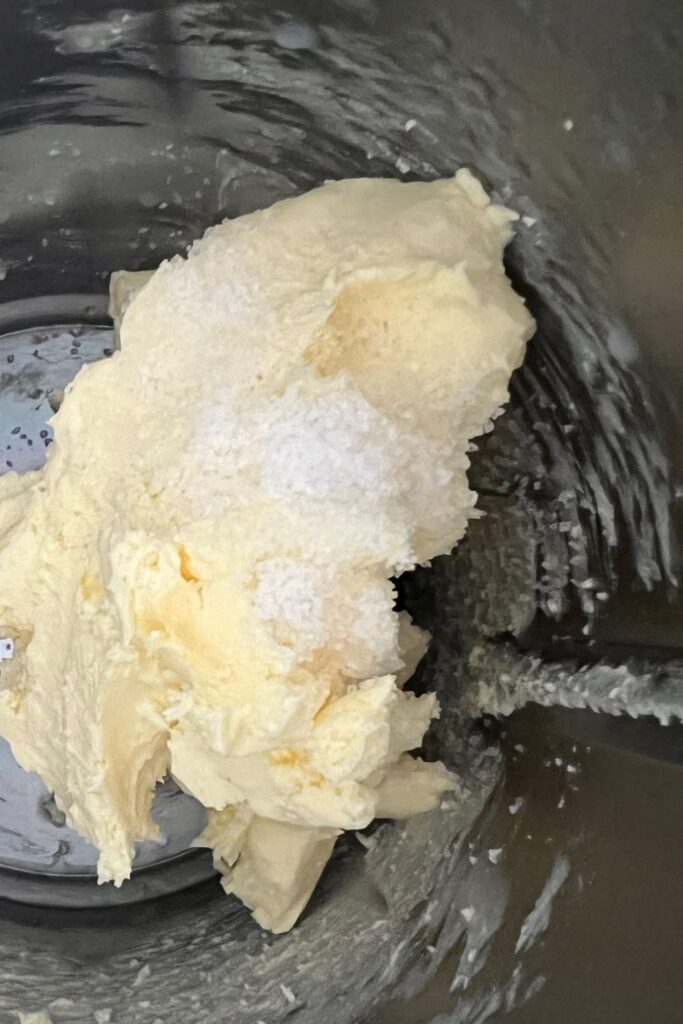
How To Use Buttermilk?
When you make butter, you'll always end up with quite a bit of buttermilk. Never throw this away! It's so useful for lots of things. Here are a few ideas you can use your buttermilk for:
- Add to sourdough pancakes or waffles instead of milk (trust me on this!!)
- Marinate chicken breasts in fresh buttermilk to tenderise it - then batter with this sourdough batter!
- Use it to replace milk in pretty much any bread recipe you like, including this sourdough buttermilk bread!
Want More Butter Recipes?
If you are loving making your own butter, you might enjoy using your butter in these recipes:
- Whipped Brown Butter
- Whipped Orange Cranberry Butter
- Whipped Herb Butter
- Whipped Cinnamon Honey Butter
- Sweet & Spicy Jalapeńo Honey Butter
- Homemade Sourdough Garlic Bread
- Buttery Sourdough Brioche Loaf
- Easy Sourdough Sandwich Discard Loaf
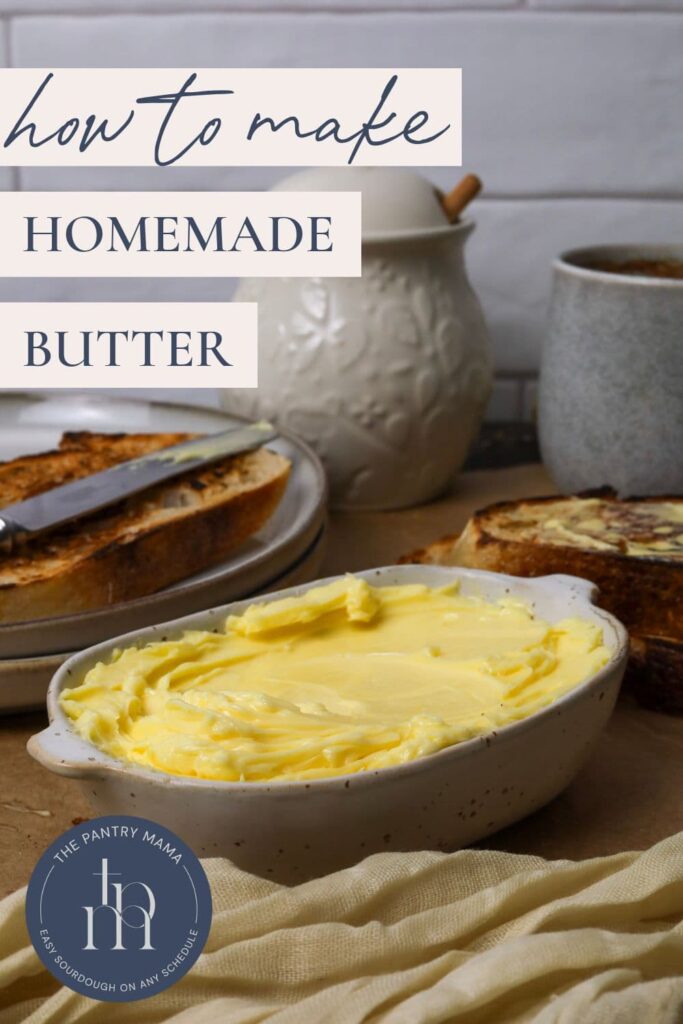
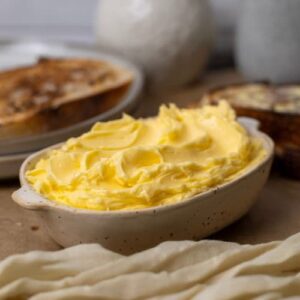
Homemade Butter [3 methods]
Video
Equipment
- Stand Mixer
- Mason Jar
- Thermomix
- Fine Cloth or Muslin Cloth
Ingredients
- 600 mls Heavy Cream must not have any thickeners or gums added.
- 1000 mls Water must be ice cold
- 5 g Sea Salt use less salt if you prefer
Instructions
MASON JAR METHOD
- For this method I recommend only using up to 250 mls of cream in the jar at a time (unless you're using a huge jar!).
- Place up to 250 mls of cold heavy cream into a mason jar and screw the lid on tightly.

- Shake the jar vigorously for around 5 minutes or until the cream separates into butter and buttermilk. The time it takes for this to happen can depend on the age of the cream (fresher cream takes longer to separate).

- Once the cream has separated into butter and buttermilk you need to strain it. Place a fine sieve or muslin cloth over a clean wide mouth mason jar and tip the butter into the cloth, allowing the buttermilk to drain through. Use the cloth the squeeze out as much of the buttermilk from the butter as you can.

- Set the buttermilk aside (you can use that for lots of different things - see the notes in the article above).
- Place the butter back into the jar you use to shake it in and cover it with ice cold water. Place the lid back on and shake the butter for around 30 seconds to wash it.

- Strain the butter back through the cloth, again squeezing out as much water as you can. This water can be thrown away.

- Your butter is ready to use! You can leave it unsalted or if you want to add a bit more flavor, add a pinch of salt to the butter and mash it through with a fork or spoon. Transfer butter to a clean jar or mold.You can use as much or as little salt as you'd like - I just add a pinch to the mason jar butter, as you're only using 250 mls of cream which will yield around 100g of butter.

STAND MIXER METHOD
- For this method, you need to use your wire whisk attachment. I highly recommend using the splatter guard too as when the cream separates it can splatter a lot.
- Once your wire whisk attachment is fitted, add the cream to the bowl. Then add fit the bowl guard.
- Turn the stand mixer on, gradually increasing the speed from the lowest the highest. The cream should start to get thick as it starts to whip.
- Keep the mixer going at its highest speed until the cream separates into butter and buttermilk. It can take anywhere from 2 to 5 minutes. Just be patient - it will happen!
- Once the cream has separated and the butter has collected inside the wire whisk, turn the stand mixer off. Lay a muslin cloth over a clean bowl or jar and knock the butter out of the wire whisk and into the cloth. Use the cloth to squeeze out as much of the buttermilk as you can. Add this buttermilk to the buttermilk in the stand mixer bowl and set aside (you can use this for lots of different things).
- Add the butter back to the stand mixer bowl and pour over one litre of icy cold water. Turn the stand mixer on and gradually increase from lowest speed to highest speed for around 30 seconds to one minute. Once the butter has collected in the wire whisk, turn the mixer off.
- Lay the muslin cloth over a bowl again and knock the butter back into the cloth. Use a spoon or scoop to grab any stray bits of butter from the water before disposing of the water.
- Use the muslin cloth to squeeze out as much of the water as you can from the butter. The more water you squeeze out the better.
- Once you've strained the butter as much as you can, it's ready to use!
- If you want to add salt to your butter, add the butter back to a clean stand mixer bowl and add up to 5g of salt. Turn the mixer on, gradually moving from lowest to highest speed until it's light and creamy and the salt has been whipped in.
- Use a spatula to remove the butter from the whisk and bowl and transfer it to a clean container or jar. This should yield you around 200g of butter from 600 mls of cream.
THERMOMIX METHOD
- The butterfly insert is recommend for this method, however it will still work without it (I've forgotten it many times and still successfully made butter).
- Insert the butterfly and pour 600 mls of cream into the bowl (it's important not to use more than 600 mls of cream at a time). Secure the lid and measuring cup. Whip the cream at speed 4 for around 1 to 4 minutes.
- You'll know the cream has separated into butter and buttermilk when you hear the blades change in sound.
- Once the cream has separated, remove the butterfly insert. Place the basket into a clean bowl and tip the buttermilk and butter into the basket, catching the buttermilk in the bowl below. Use your spatula to press as much of the buttermilk out as you can (you can use a piece of fine cloth if you prefer).
- Set the buttermilk aside and return the strained butter to the Thermomix bowl, adding 1000 mls of iced water. Turn on to speed 4 for around 30 seconds to wash the butter.
- Tip the butter into an ultra fine cloth and squeeze out as much water as you can.
- If you want salted butter, return the butter to a clean Thermomix bowl with 5g of salt. Whip for 30 seconds on speed 4.
- Your butter is now ready to use!
Nutrition
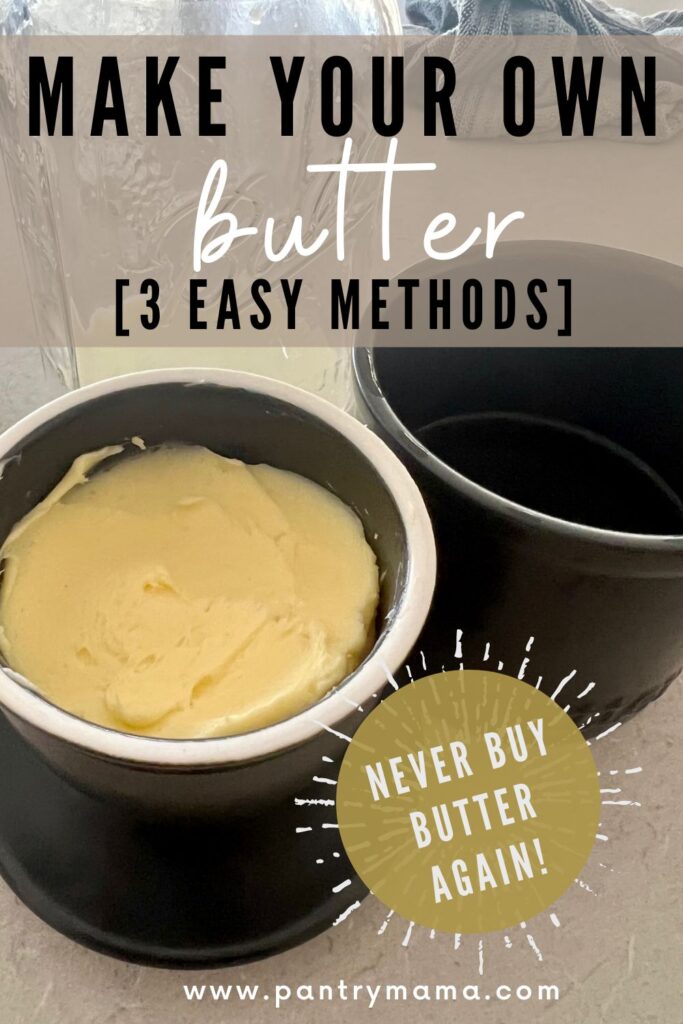
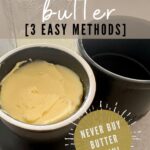
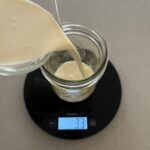
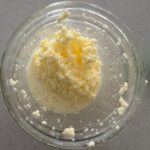
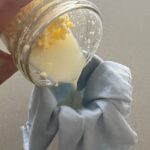
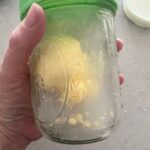
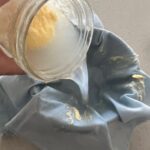
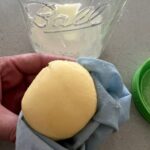
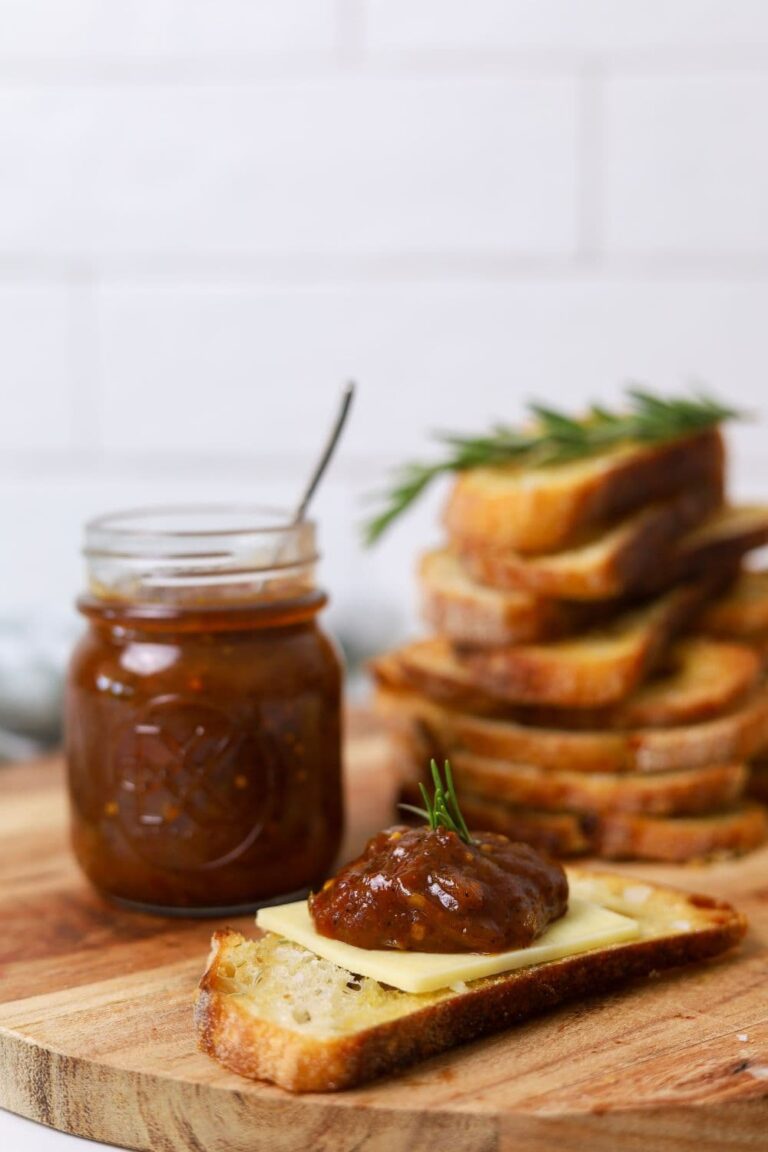
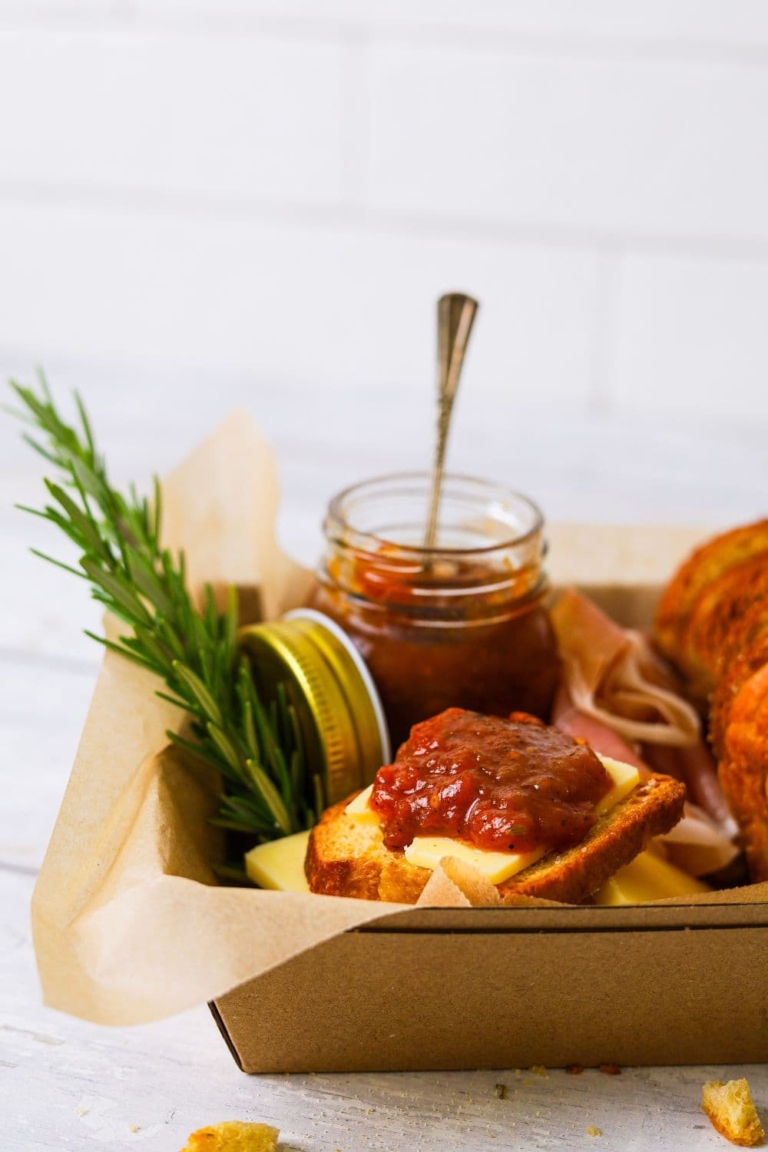
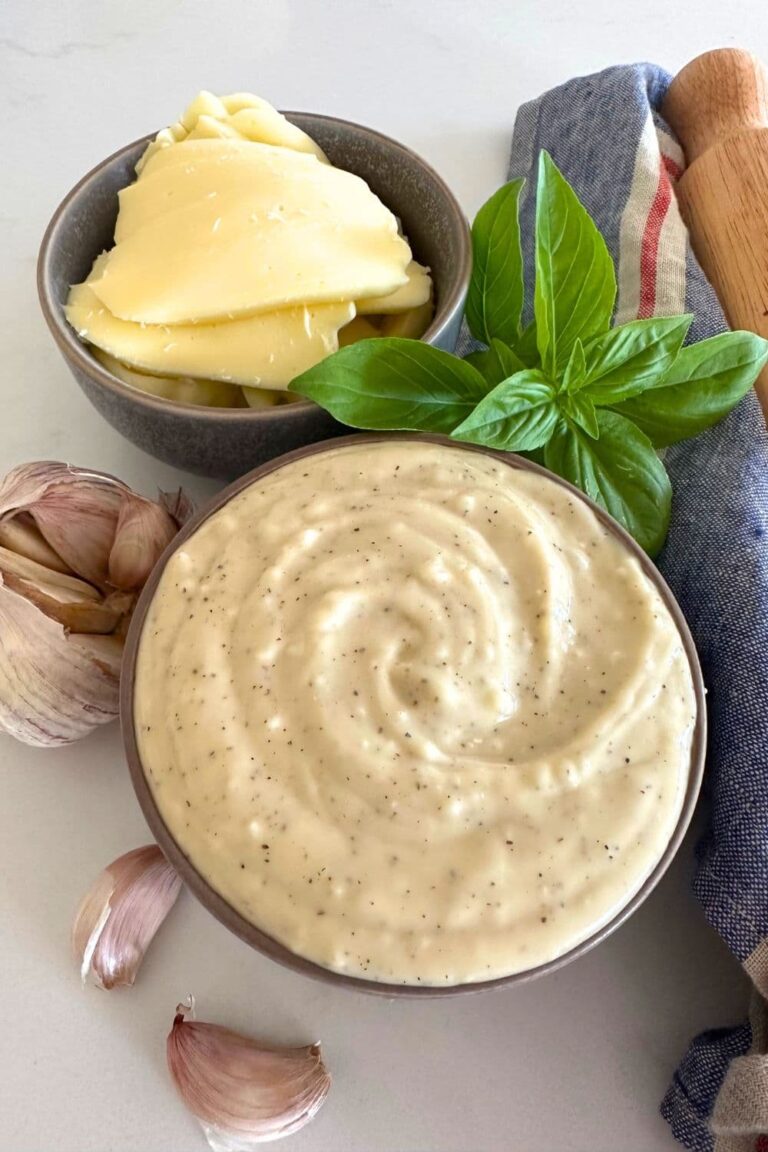
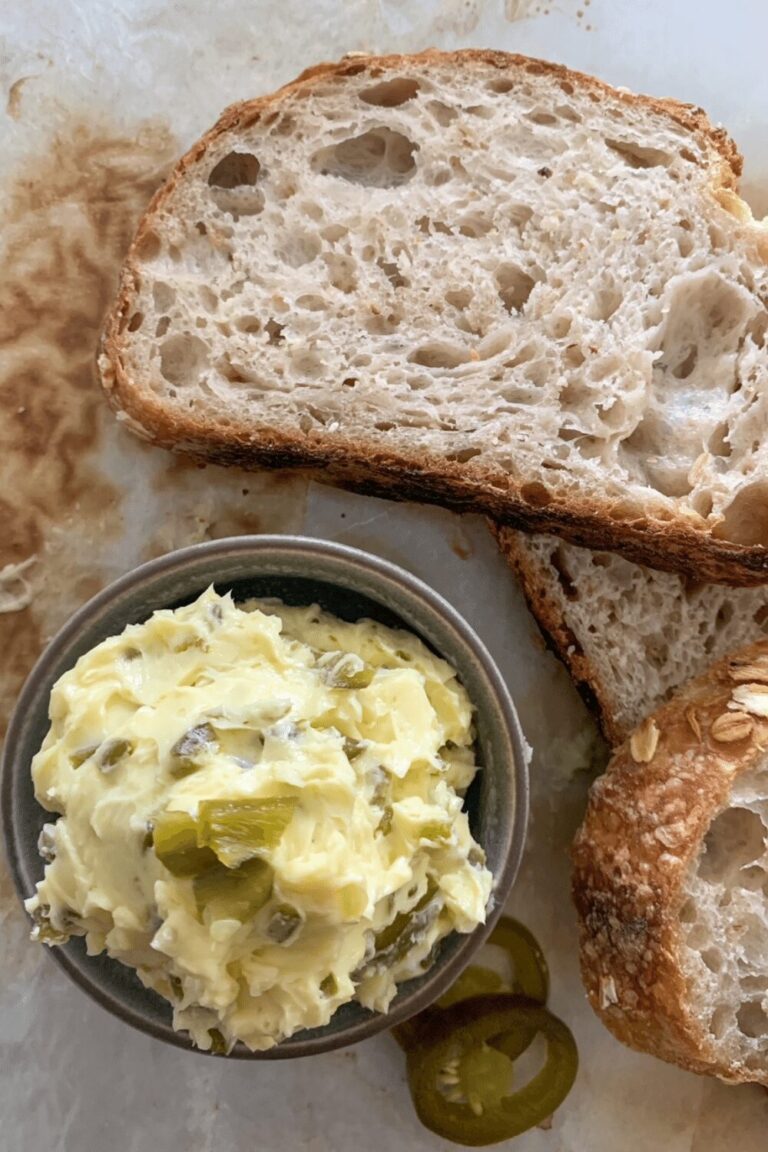

Excited to try this! You mentioned you can use cream close to expiry, how long will the butter then last?
you can just treat it as you would normal butter. I always salt my butter which increases it's shelf life 🙂 If you're worried, just store it in the fridge 🙂
I made this for the 1st time today using my stand mixer & it turned out brilliantly. Love the fact that I have homemade butter & buttermilk.
Just waiting for a French butter dish & moulds to arrive so my next batch will be more professional.
Thank you Kate
How many sticks of butter does the stand mixer method make?
Is cheesecloth ok to strain the butter, or would I need a cloth with a tighter weave?
So easy and so delicious. Tried the mason jar method and it was simple and work great! Will definitely make again for my next batch of sourdough. Thanks!
Thank you for sharing this. Looking forward to making my own butter. Love all your recipes and appreciate you sharing your talent.
Wow. it's been a minute since I have made butter. When I was a kindergarten teacher, we made butter in a jar just like this. I didn't think about adding salt then. I never had a recipe for it and I am glad to have an official recipe. I used this as a science project about how some things can change shape or form. The kids loved it and so did I. We put the butter on a couple of saltine crackers. I retired in 2001 after teaching 28 years.
You can make butter with whole milk. Unhomogenized is best. The issue is that you get far less butter